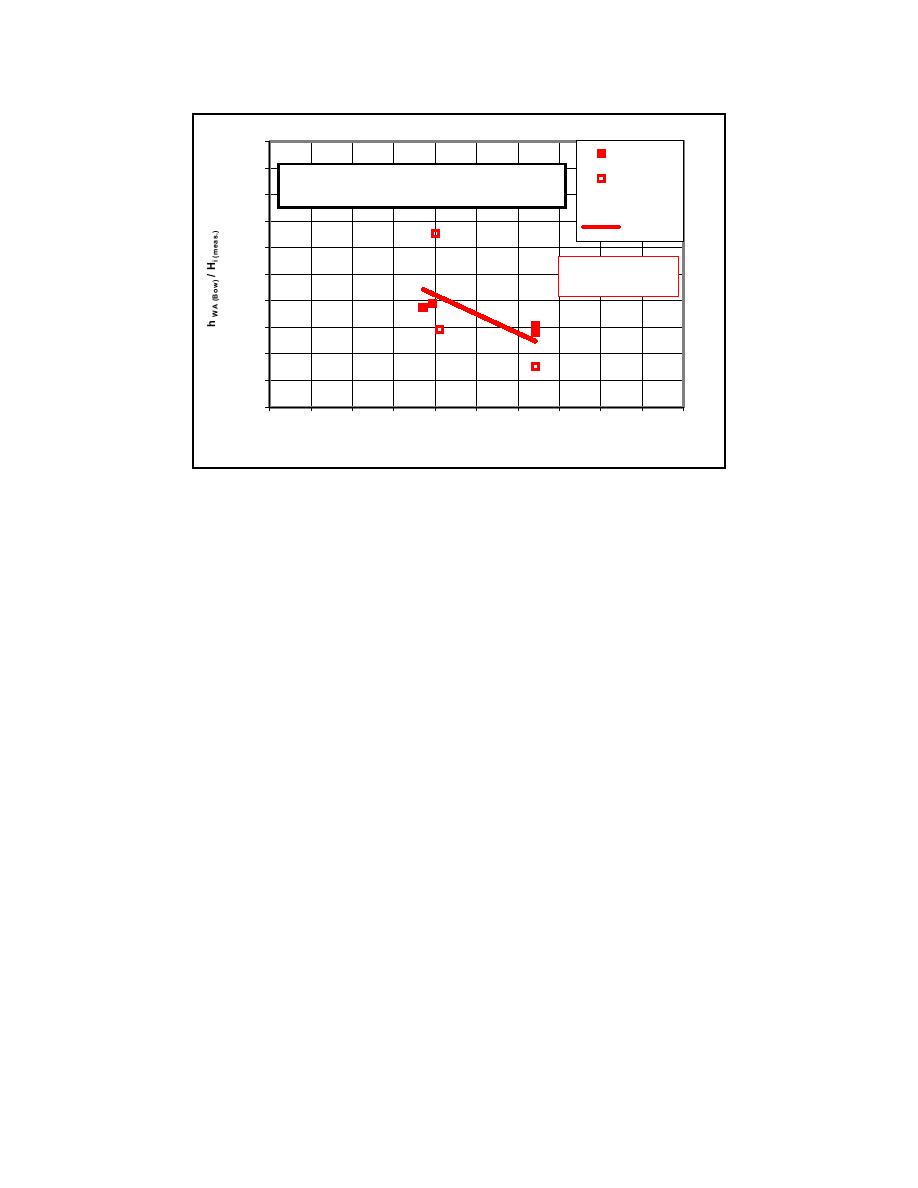
ERDC/CHL CHETN- IX-7
December 2001
2.00
DDU412
1.80
World Utility - Outbound - Relative hWA at the Bow
DDU422
Full load (MAX draft)
1.60
all
1.40
Linear (all)
1.20
y = -0.1436x + 1.4182
1.00
2
R = 0.3828
0.80
0.60
0.40
0.20
0.00
0
1
2
3
4
5
6
7
8
9
10
Speed, knots
Figure 15. Normalized hWA,Bow for the World Utility for outbound runs with full load
(MAX draft). A linear least squares fit is also shown
difference of 2.5 to 10 times the PIANC value of β= 0.2. The βmeas are much smaller than the
PIANC guidance. Future analysis will include the results from the other laboratory data in these
comparisons.
SUMMARY: This Technical Note summarizes preliminary comparisons between field and
laboratory measurements of wave-induced vertical motions at Barbers Point Harbor. Prototype
ship motions and environmental data were obtained in May 1999 for five ships. These field
measurements were reproduced in a controlled laboratory study with a model of the World
Utility, typical of the ships studied. In this laboratory procedure, it was determined that scale
effects were not significant.
Preliminary comparisons between laboratory and field
measurements were very encouraging and provide confidence in the ability to accurately
replicate and measure complicated ship motion responses in the laboratory. These results show
that laboratory models are capable of predicting slightly conservative estimates of wave-induced
vertical motions for a range of wave conditions. An example was provided to illustrate the
relationship between the wave-induced, vertical ship motions and underkeel clearance.
This was a very limited data set based on one entrance channel, one ship, and one draft.
Maximum wave-induced vertical motions at several other locations on the model ship can be
compared to the hWA,Bow value. Typically, the bow location experiences the largest vertical
motion, but other locations along the ship's keel should be investigated. Additional data are
being compared for the light ship condition of the World Utility vessel. Although these data are
less interesting from the channel draft perspective, it is a useful data set for comparing ship
response under different loading conditions. Prototype data were also collected for different
ships and entrance conditions at Charleston Harbor, SC. Future plans include additional
laboratory verification with these data.
18



 Previous Page
Previous Page
